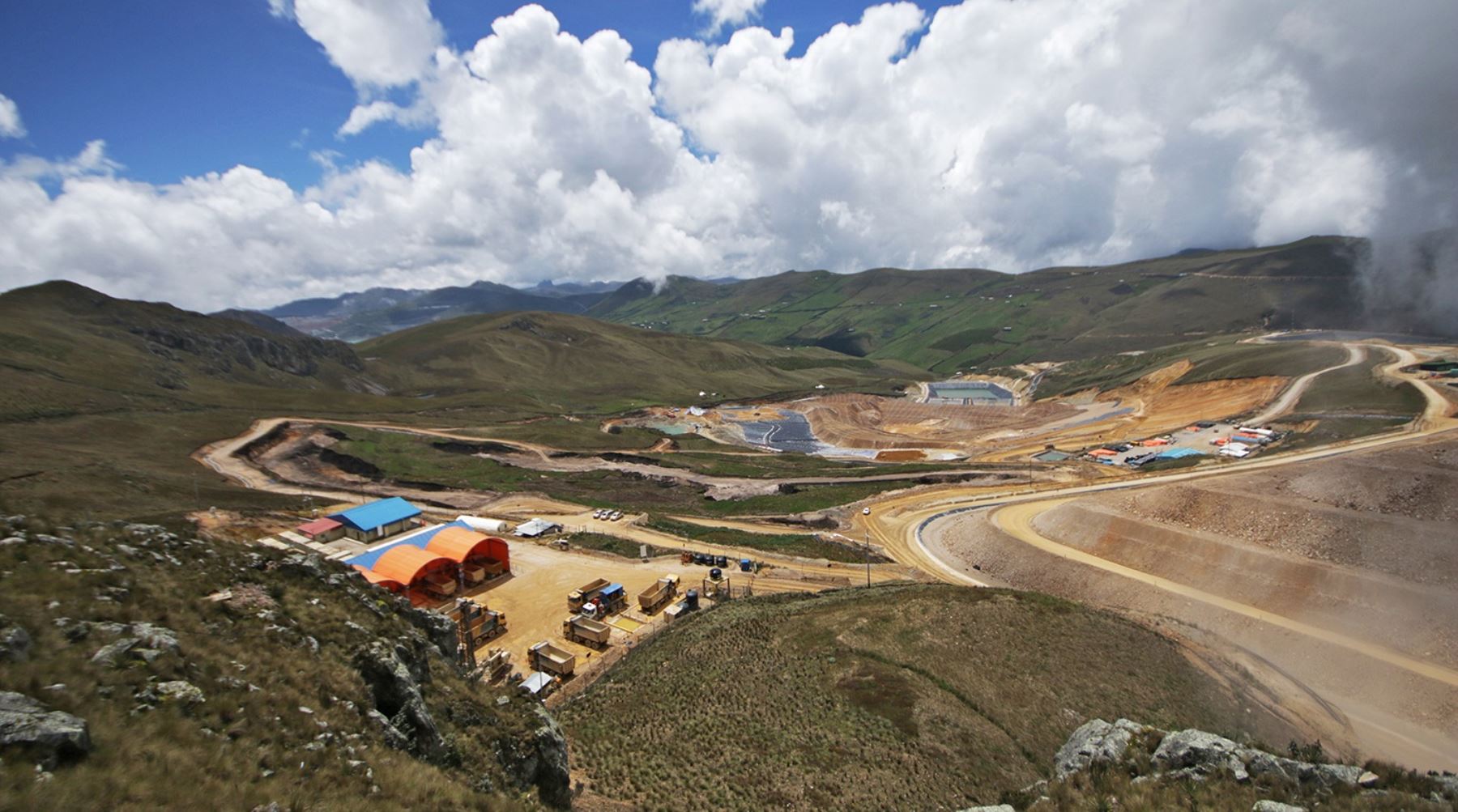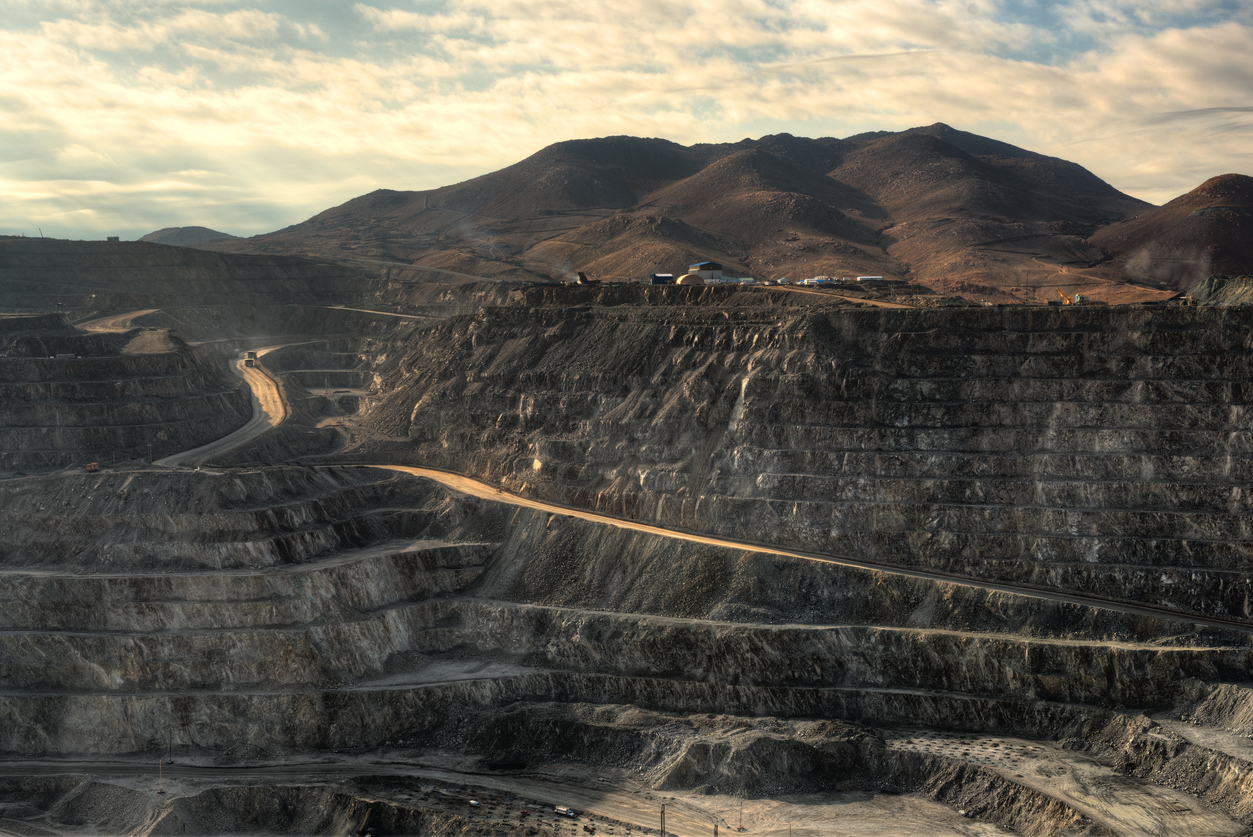
Rio Tinto (ASX:RIO) has entered into a joint venture agreement with First Quantum Minerals (TSX:FM) to unlock the development of the La Granja copper project in Peru. The project, located at high altitude in Cajamara, Northern Peru, is one of the largest undeveloped copper deposits in the world, with an estimated resource of 4.32 billion tonnes at 0.51% copper.
Under the agreement, First Quantum will acquire a 55% stake in the project for $105 million and invest up to $546 million to sole fund capital and operational costs, taking the project through a feasibility study and towards development. The transaction is expected to be completed by the end of Q3 2023.
As the majority owner, First Quantum will operate the La Granja project, with initial work focussed on completing the feasibility study. Rio Tinto had acquired the La Granja Project from the Government of Peru in 2006 and has since carried out extensive drilling programs to expand the declared resource and understanding of the orebody, and established partnerships with host communities, local and national governments.
La Granja is currently the fourth-largest copper project in the world, and Peru is the world’s second-largest copper producer. The agreement between Rio Tinto and First Quantum Minerals is expected to boost the Peruvian mining industry and create new job opportunities in the region. The joint venture will also provide the necessary capital to develop the La Granja project, which is expected to become a large, long-life operation, benefiting the local communities and the country’s economy.
The joint venture agreement between Rio Tinto and First Quantum Minerals to develop the La Granja copper project in Peru is not only significant for the South American nation’s mining industry, but also for the two global mining giants involved. For Rio Tinto, the move further strengthens its copper portfolio, which was recently boosted by the acquisition of Turquoise Hill Resources and the launch of underground mining at Oyu Tolgoi in Mongolia.
On the other hand, First Quantum Minerals has been in the news lately for its dispute with the Panamanian government over royalties, which led to a temporary halt in operations at its Cobre Panama mine earlier this year. The two parties reached an agreement in March that guarantees a minimum annual income of $375 million to the Panamanian government, allowing the mine to resume operations.
With the La Granja project now on the horizon, First Quantum Minerals is expected to focus its attention on unlocking the potential of one of the world’s largest undeveloped copper deposits. The joint venture will inject the necessary funds to take the project through a feasibility study and towards development, which is likely to create new job opportunities in the region and benefit local communities.
The above references an opinion and is for information purposes only. It is not intended to be investment advice. Seek a licensed professional for investment advice. The author is not an insider or shareholder of any of the companies mentioned above.

South America is home to some of the largest copper deposits in the world, and several exploration companies are working hard to discover new resources and expand existing ones. Here are the top three copper exploration companies in South America, along with some of their most notable intercepts.
Solaris Resources (TSX:SLS) (OTCQB:SLSSF)
Solaris Resources (TSX:SLS) (OTCQB:SLSSF) is a Canadian copper exploration company focused on the discovery and development of copper and gold deposits in the Americas. The company has a strong presence in South America, where it is actively exploring for copper and gold deposits in Ecuador and Peru.
The company continues to report regular exploration results expanding on its discoveries at what has been called a potential “superpit”.
Warintza is considered a take-out target as the Company has defined a large 1.5Bt copper inventory, featuring a high-grade starter pit and low strip ratio, within a mining district offering major structural advantages from highway access, abundant and low-cost hydroelectric power, fresh water, labour and low elevation. The Company has de-risked the project by locking in a social license through an IBA signed with the communities, and freezing in place the regulatory and fiscal framework by signing an Investment Contract with the Government in December. The final de-risking item is completing project permitting, which is ongoing and expected in 2024 with the project being designated a “strategic priority project” by the Government.
First Quantum Minerals (TSX:FM)
First Quantum Minerals (TSX:FM) is a Vancouver-based mining company with operations in Africa, Australia, and South America. Its flagship copper mine is the Cobre Panama project, located in Panama. The company has been exploring the region for years and has made several significant copper discoveries.
First Quantum has reported several impressive drill intercepts at Cobre Panama. One of the most notable was a 136-meter intersection of copper and gold mineralization, grading 0.63% copper and 0.35 grams per tonne of gold. This intercept was found in the southeast extension of the Cobre Panama deposit, and the company believes it has the potential to significantly increase the mine’s resources.
Anglo American (LSE:AAL)
Anglo American (LSE:AAL) is a multinational mining company with operations in Africa, Europe, and the Americas. Its copper operations are located in Chile, where it owns a 50% stake in the Los Bronces mine and a 100% stake in the Mantoverde mine.
Anglo American has reported several impressive drill intercepts at Los Bronces. One of the most significant was a 95-meter intersection of copper and molybdenum mineralization, grading 0.67% copper and 0.022% molybdenum. This intercept was found in the north zone of the mine, and the company believes it has the potential to increase the mine’s resources.
Teck Resources (NYSE:TECK)
Teck Resources (NYSE:TECK) is a Canadian mining company with operations in Canada, the United States, and Chile. Its copper operations are located in Chile, where it owns a 90% stake in the Quebrada Blanca mine.
Teck reported several intercepts at Quebrada Blanca since exploration began. One of the most biggest was in 2021; a 129-meter intersection of copper mineralization, grading 0.39% copper. This intercept was found in the QB2 deposit, which is currently under construction and expected to begin production in 2022. The company believes that QB2 has the potential to become a significant copper producer, with a projected mine life of over 25 years.
The above references an opinion and is for information purposes only. It is not intended to be investment advice. Seek a licensed professional for investment advice. The author is not an insider or shareholder of any of the companies mentioned above.

Tertiary Minerals (LON:TYM) has signed a technical cooperation agreement with First Quantum Minerals (TSX:FM) to increase copper exploration in Zambia. This specific deal will include the Mukai and Mushima North project by Tertiary Minerals in the north-western province of Zambia. Mushima North is adjacent to First Quantum’s Trident project, including the Sentinel copper mine and the Enterprise nickel mine. Thanks to synergies between the properties and the new agreement, both companies will be able to boost copper exploration at the properties.
Executive Chairman Patrick Cheetham said in a statement: “This agreement will turbo-charge Tertiary’s Zambian exploration in these two key licence areas. We are set to benefit from FQM’s extensive and in-depth country experience, gained over many years of exploration and mine development in Zambia.”
Tertiary and First Quantum will establish a technical committee to work together to develop the two projects, which is located in an active exploration area for First Quantum. The Mushima North exploration licence is also in an active prospecting region for First Quantum. Tertiary and First Quantum will get together and form a technical committee to collaborate on the advancement of both initiatives.
First Quantum will also advise and assist Tertiary on the project’s technical matters and provide Tertiary with all of its historical exploration data for the two licence areas. The London-based miner said the agreement will provide them with the expertise of one of the world’s biggest copper producers, without any associated cost First Quantum. In return, Tertiary added, First Quantum will gain first-hand knowledge of new discoveries made and makes the company a future development partner thanks to the agreement.
Zambia is a focus for both companies, thanks to renewed confidence in the investment climate in the country. First Quantum had production of 435,000 tonnes of copper and 128,000 oz gold at Zambian operations in 2021, and the company approved a $1.25 billion expansion of the Kansanshi copper mine that aims to boost production further.
First Quantum has also recently approved a $100 million investment in the Enterprise nickel project that is expected to start producing in 2023 and is covered by the technical agreement. The company will ramp up production at the project with the goal of producing 30,000 tonnes of nickel concentrate per year.
The above references an opinion and is for information purposes only. It is not intended to be investment advice. Seek a licensed professional for investment advice. The author is not an insider or shareholder of any of the companies mentioned above.
If you would like to receive our free newsletter via email, simply enter your email address below & click subscribe.
CONNECT WITH US
Tweets
Tweet with hash tag #miningfeeds or @miningfeeds and your tweets will be displayed across this site.
MOST ACTIVE MINING STOCKS
Daily Gainers
 New Age Exploration Limited New Age Exploration Limited |
NAE.AX | +33.33% |
        |
CASA.V | +30.00% |
    |
VKA.AX | +28.57% |
    |
CTO.AX | +25.00% |
        |
BSX.TO | +22.22% |
        |
ANK.V | +21.74% |
        |
SRI.V | +20.00% |
        |
NEV.V | +20.00% |
        |
IB.V | +18.18% |
        |
SLL.V | +16.42% |

 Follow us on Twitter
Follow us on Twitter Become our facebook fan
Become our facebook fan







